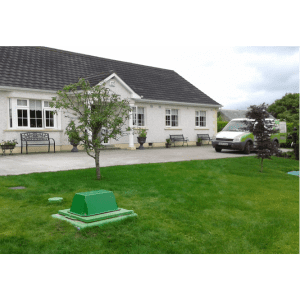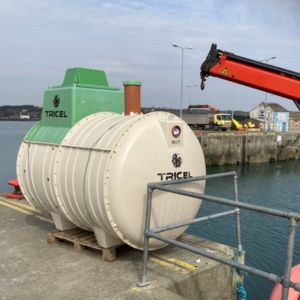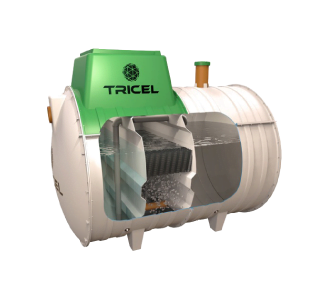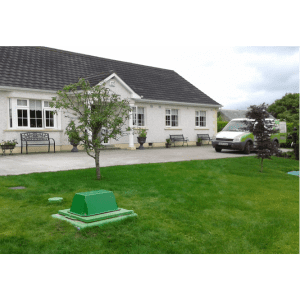
SEWAGE TREATMENT
Sewage treatment plant installation : Everything You Need to Know
Home » Wastewater Treatment » Sewage treatment plant installation
- August 8, 2025
Find out more about wastewater treatment.
Wastewater treatment is based on the process of taking out contaminants from water that has been used in homes, businesses, and industries. The treated water can then be safely released into the environment or used again for various purposes. We will explain the basics of a sewage treatment plant installation and why it’s crucial for individuals to understand.
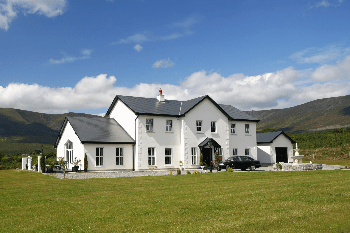
If you have any questions, feel free to call us
vISIT OUR virtual SHOWROOM
Why is a good sewage treatment plant installation Important?
A good Sewage treatment plant installation is crucial for several reasons. Firstly, untreated wastewater can contain harmful contaminants such as bacteria, viruses, and chemicals that threaten human health and the environment. Discharging untreated wastewater into rivers, lakes, or oceans can lead to pollution, harming aquatic life and impacting the ecosystem.
Moreover, the demand for freshwater resources increases as the world’s population grows. We can reuse wastewater for purposes such as irrigation or industrial processes, by treating wastewater. This process helps conserve freshwater resources, reduce the strain on the environment, and support sustainable development.
How is Wastewater Treated ?
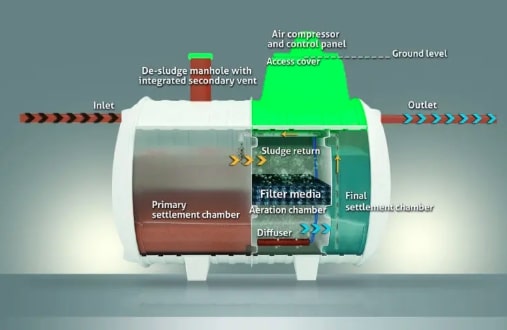
Wastewater treatment involves several stages that aim to remove physical, chemical, and biological contaminants from the water. The treatment process may vary depending on the quality of the incoming wastewater, the type of contaminants present, and the level of treatment required. However, the basic stages of wastewater treatment are as follows:
1. Preliminary Treatment
In this stage, large objects such as rocks, sticks, and rags are removed from the wastewater using screens and grit chambers. This stage is processed by industrial and commercial companies’ water treatment in collective wastewater treatment.
2. Primary Treatment
During this stage, the wastewater is held in large settling tanks, allowing solids like human waste and food scraps to settle to the bottom. The settled solids are then removed as sludge, which can be further treated for disposal or beneficial use. It also allows grease to float on the surface.
3. Secondary Treatment
This method uses biological processes to break down the organic matter in the wastewater. The wastewater is aerated and mixed with microorganisms that consume the organic matter, producing a sludge.
4.Tertiary Treatment
Tertiary treatment is a more advanced treatment that removes contaminants such as nutrients, metals, and pathogens. This process is made for a further treatment of the water for sensitive grounds, for example.
What Can You Do ?
While municipal or industrial facilities typically carry out wastewater treatment, individuals can also take steps to have less environmental impact and support wastewater treatment efforts. Here are some tips:
- Reduce water usage: Conserving water reduces the volume of wastewater that needs to be treated, helping to save energy and resources.
- Properly dispose of hazardous waste: Chemicals, oils, and other hazardous materials should not be disposed of down the drain, as they can harm the treatment process and the environment.
- Use natural cleaning products: Many household cleaning products contain corrosive or harsh chemicals that can harm the environment and interfere with wastewater treatment. Consider using natural alternatives instead.
- Be mindful of what you flush: Only flush human waste and toilet paper down the toilet. Other items, such as wipes, sanitary products, and medications, can cause blockages and harm the treatment process.
- Make sure you have a compliant sewage treatment plant if your house isn’t linked to the municipal sewage treatment system.
Our Solutions
Septic tank : Tricel Vento
The Tricel Vento septic tank is an ideal solution for wastewater treatment when used in conjunction with the appropriate disposal system, it’s one of the septic tank options.The tank is sized sufficiently to hold wastewater for an adequate amount of time for the solids to drop to the bottom to form a sludge and the lighter material to rise to the top of the liquid to form a scum.
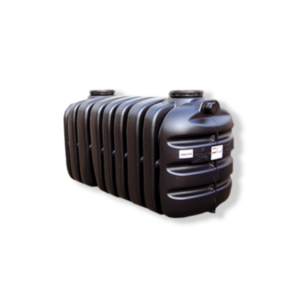
DOMESTIC WASTEWATER TREATMENT PLANTS : Tricel NOVO UP TO 50 PE
The Tricel Novo wastewater treatment plants are reliable, easy to install, and simple to maintain. The applications for these highly functional plants range from 1 to 50 PE (population equivalents). Using proven fixed bed technology, the Tricel Novo submerged aeration pump suits household and light commercial applications. The system consists of three independent treatment zones, each performing a different stage of the purification process.
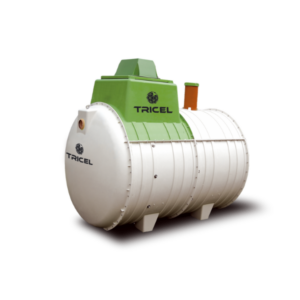
TRICEL MAXUS : Commercial WASTEWATER TREATMENT
The Tricel Maxus operates using Submerged Aerated Filter (SAF) Technology. Its functionality is governed by the E-III control panel, which serves as the central hub connecting all electrical components.
These systems are renowned for their durability and simplicity in installation, offering various configurations adaptable to any site requirements.
Their operation is straightforward, and maintenance throughout the product’s lifespan is hassle-free.
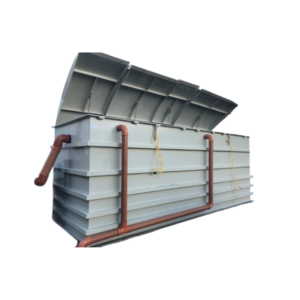
PACKAGED FILTER SYSTEMS: Tricel PURAFLO
The Tricel Puraflo treatment modules are polishing filters for secondary and tertiary wastewater treatment. Sites with high environmental sensitivity, such as those in water table protection zones, require a higher level of treatment. Puraflo modules are combined with a secondary treatment tank, typically an aerobic unit, to achieve the necessary level of treatment.
In the third stage of treatment (tertiary treatment), the secondary treated effluent is further treated. A combined Puraflo polishing filter module and combination system will significantly reduce pathogens and nutrients.
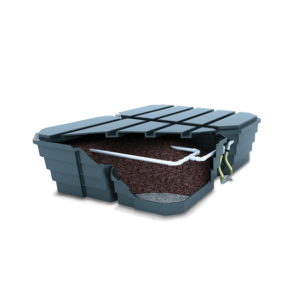
SAND POLISHING FILTER: SANDCEL
As a sand polishing filter, Tricel Sandcel treats wastewater effluent and disposes of the treated liquid into groundwater. These filters allow effluent from secondary treatment units to be treated and disposed of effectively. As stipulated in the EPA Code of Practice, stratified layers of certified sands are used in the filters. This filter is enclosed in impermeable GRP panels and will not rot or decay, ensuring long-term durability. All pipework can be accessed from a service pod, whether the filters are installed above ground or below ground. Under or overground, you can install this sand filter at varying heights depending on the site conditions. Additionally, Sandcel’s in-house team can design filters for larger applications.
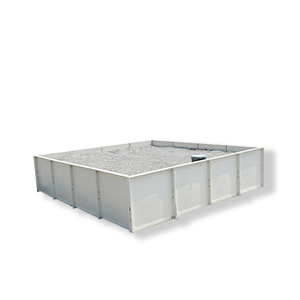
next gen tertiary treatment: Tricel Tero
The Tricel TERO provides tertiary treatment of wastewater that purifies the treated effluent from a packaged treatment plant. Coconut coir is used to treat the water and clean water is then discharged directly into the ground.
Proven E.Coli Treatment capabilities in line with the new EPA requirements (<1000cfu/100ml).
The Tero is designed to work in partnership with the Tricel Novo for easy Plug and Play connectivity. It is a compact system that is easy to install & simple to maintain.
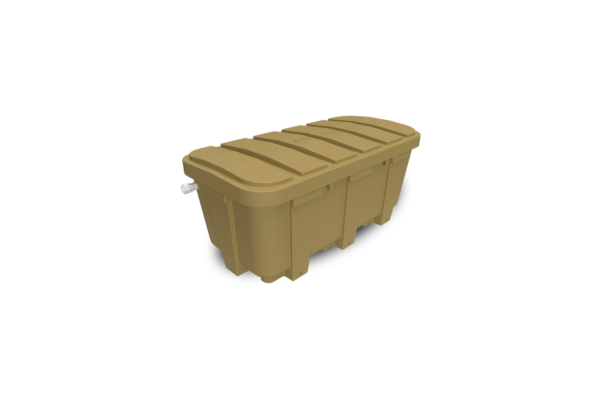
Conclusion
Wastewater treatment and a good sewage treatment plant installation are essential processes that plays a critical role in protecting human health and the environment. By understanding the basics of wastewater treatment and reducing our impact, we can support sustainable development and ensure that our water resources are conserved for future generations.
Articles you might be interested in
50 YEARS IN BUSINESS
A highly successful multinational corporation with over 50 years’ valuable industry experience
SEWAGE TREATMENT PLANTS
Plants available for all capacities, from 1PE up to 50PE. Free advice on request.
Fast Delivery
On-time delivery is a core requirement of our successful business operations
Meet our team
To find a technician in your area, visit our page
TALK SEWAGE TREATMENT
To speak to one of our agents online, click here
ASK FOR A QUOTE
Request a free quote today to have a quote that meets your project!
Key Features

Fast Delivery
Fast delivery + Rapid response to all our customers

Certified
Tricel Products are certified to EN12566-1 and EN 12566-3 certified

Technical expertise
Unrivalled technical expertise by our sales team regarding wastewater treatment solutions
Get in touch
Error: Contact form not found.
